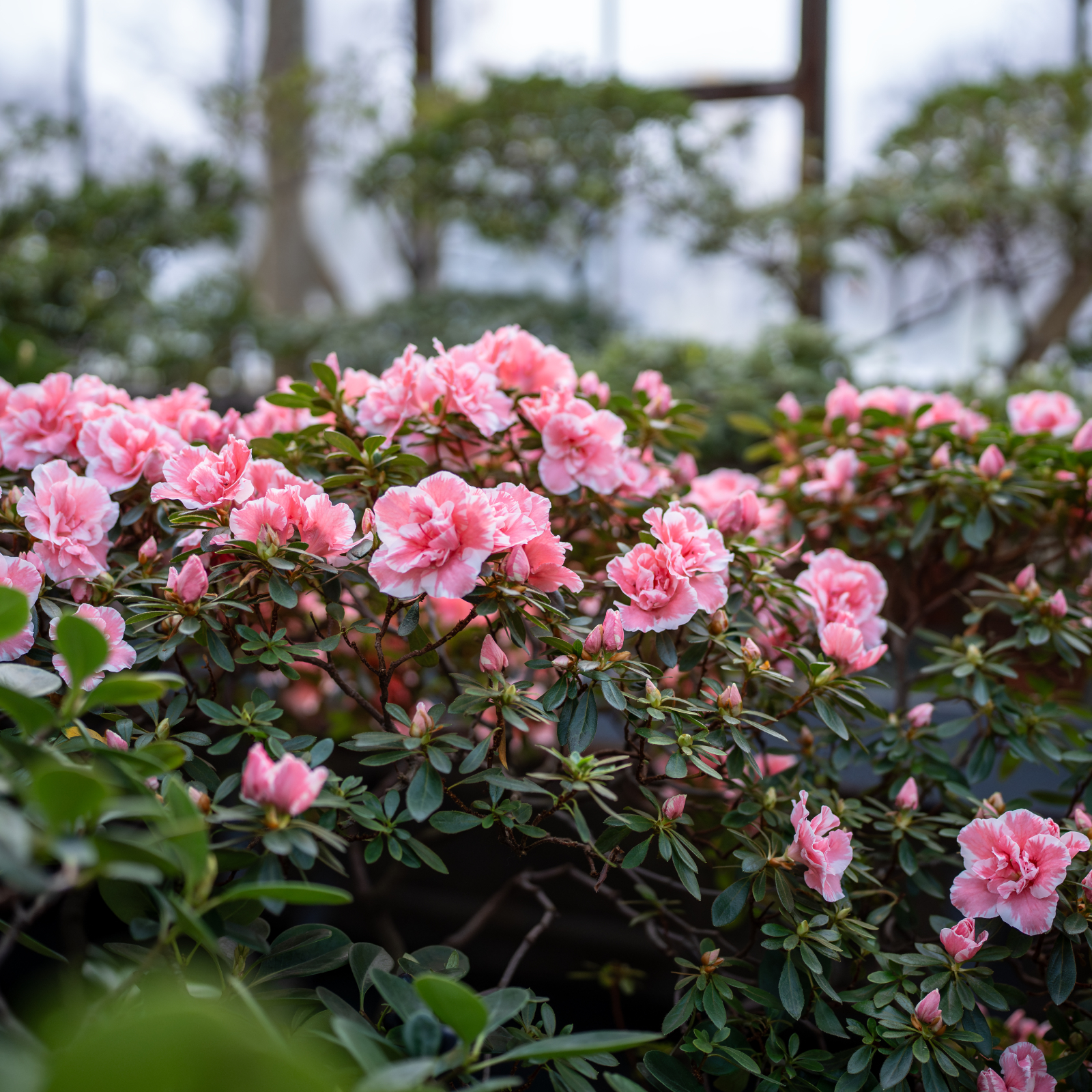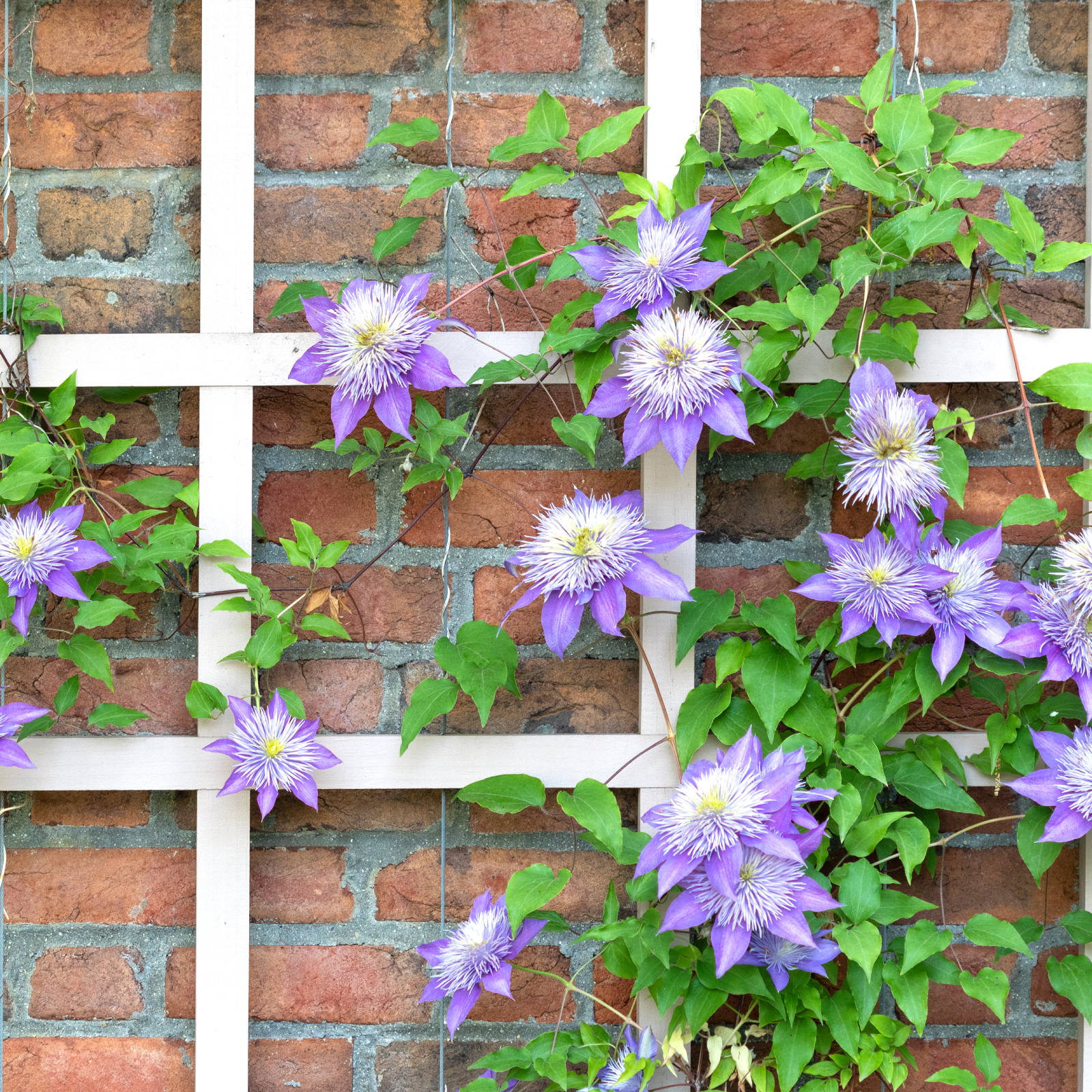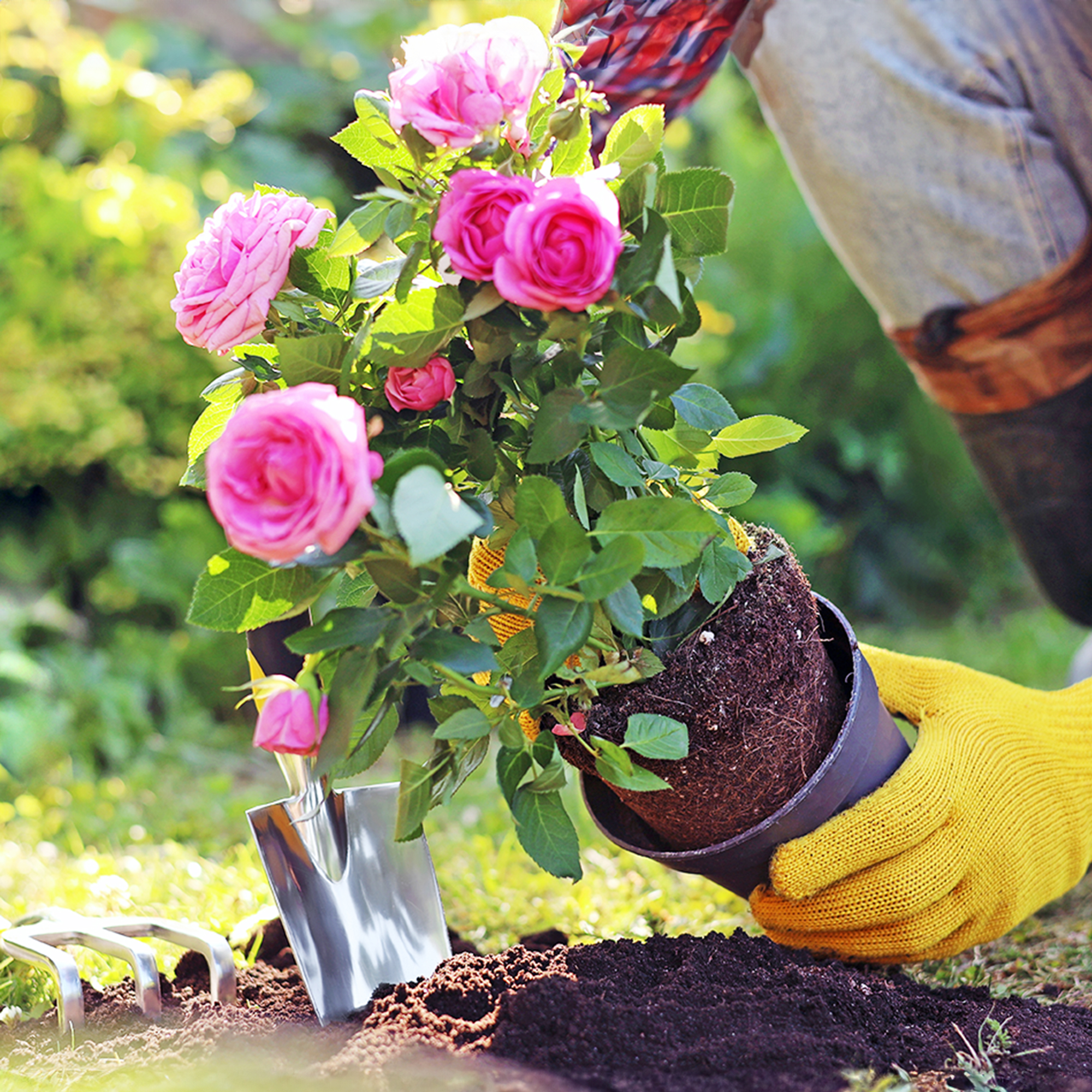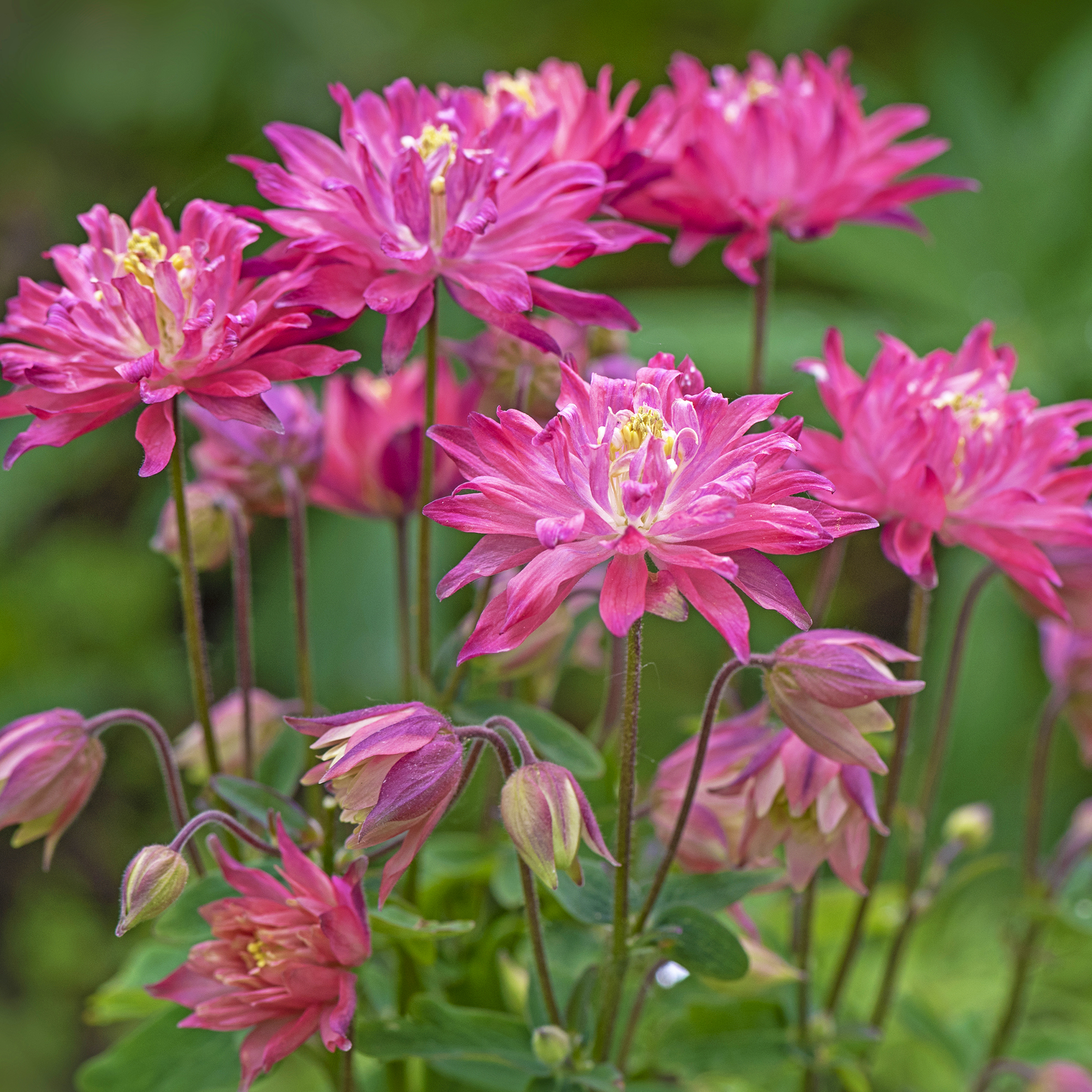How To Grow And Care For Azaleas

Azaleas can be grown in nearly any garden, adding vibrant color in the spring. While growing and caring for these shrubs is relatively easy, there are some things to consider when adding them to the landscape.
Choosing the Right Azalea
While azaleas can be enjoyed in many different regions, it is best to select a shrub that is hardy for your growing zone.
The next step is to choose a shrub that fits the needs of your landscape. Are you looking for an evergreen azalea that will retain its leaves all year long, or a deciduous type typically with a larger bloom size but with the compromise of loss of leaves in the fall?
The last step is the fun part, it is now time to choose the flower color and bloom time.
Azaleas offer something for everyone in a wide array of flower shades from pastel shades to vibrant hues. Be sure to buy azaleas when in bloom, so you know exactly what the flowers will look like.
Azalea flowering time time varies anywhere from late winter to early summer depending on your region. However, some newer varieties are known to bloom in the spring and then re-bloom again in the fall. You can even extend the flower show by staggering bloom times within the landscape.
Site Considerations
The most important part to successfully growing azaleas is to choose the right planting spot. Azaleas have a shallow root system and require well-drained soil. They will not tolerate a wet root system.
Gardening tips, videos, info and more delivered right to your inbox!
Sign up for the Gardening Know How newsletter today and receive a free copy of our e-book "How to Grow Delicious Tomatoes".
These shrubs should also be planted in a slightly shaded spot, including protection from hot afternoon sun. However, too much shade may result in poor bloom production and weak growth. Be sure to choose the right azalea for your garden’s light conditions to ensure a healthy plant with plentiful blooms.
Planting
Azaleas perform best when their planting hole is amended properly. Organic amendments such as compost, peat moss or pine bark help to improve drainage, increase nutrient retention, and lower the soil pH.
The planting hole should be roughly 6” (15 cm.) deeper and 12” (30 cm.) wider than the root ball, to allow the root system enough room to establish into the soil. Incorporate the soil amendments into the backfill of the soil, not exceeding one-third of the total volume.
For an already established shrub, the best time to transplant an azalea depends on your climate. In colder regions, it is best to transplant in the spring, before new growth has begun. In hot climates, the opposite is true. The best time to transplant would be late summer or early fall.
Mulching
A layer of mulch will help retain moisture and keep weeds at bay. Organic mulches such as pine bark, pine needles and dried chopped oak leaves will also help to condition and add acidity to the soil. When applying the mulch, be sure to keep it away from the main trunk and stems of the plant.
Fertilizer
Azaleas are typically not hungry plants so it is not necessary to create an azalea fertilizer schedule for your new blooming beauties. However, an application of fertilizer once the plants begin growth in the spring would be beneficial especially if the growth is slow or if the plant is suffering.
A general, balanced fertilizer would be recommended or a product specific to acid-loving plants.
Apply the product along the drip line of the shrub as the roots can extend from the trunk to the branch tips and beyond. Water well after application. Avoid getting the fertilizer granules on the foliage.
Pruning
While pruning azaleas is never necessary, you may want to maintain size, create a better shape, or rejuvenate the plant.
The best time to prune an azalea is just as the flowers are fading. Cutting the plant at any other time of year will cut off the buds for the next season of flowers. Even waiting just a few weeks from the time the blooms fade can be risky.
Dead, dying or weak branches can be cut out at any time.
Winter protection
Whether you live in the North or South, there are a few precautions you can take to prepare your azaleas for the winter months.
First, you will need to slow down and eventually stop any additional irrigation of your plants in the fall. Also, never fertilize your plants after mid summer as the new growth that may be produced will become susceptible to cold damage.
A layer of mulch around the plant will also help to prepare it for its first freeze.
Common Problems
While azaleas are seldom bothered by pests and disease there are a few common azalea problems that sometimes affect these flowering plants, including scale, lace bugs, root rot and mineral deficiencies.
Azaleas with nutrient deficiencies will have yellowing leaves that may drop, dead branch tips and stunted growth. The addition of specialty nutrient products, such as Iron, may be needed to fix the deficiency.
If a pest is present and an insecticide is needed, apply when the plant is not in bloom to not directly harm the pollinator population. This goes for all pesticides, even those listed as organic.

Amy Draiss, Digital Community Manager at Gardening Know How since 2021, seamlessly blends her hands-on gardening experience with a digital green thumb. With roots in family landscaping and management at a garden center, Amy has cultivated expertise in plants, supplies, and customer relations. Residing in the Midwest, Amy tends to her two-acre haven, showcasing a diverse range of trees, shrubs, and perennials. As the Hydrangea Queen, she shares her love for these blooms and imparts gardening wisdom through videos and social media. Beyond gardening, Amy enjoys quality time with her family, travel, and theme parks. Amy's mission is to inspire and advise plant enthusiasts, fostering flourishing gardens for both seasoned and budding gardeners alike.
-
 How To Make A Bouquet Garni Or Herb Bundle For Cooking
How To Make A Bouquet Garni Or Herb Bundle For CookingIf you’re a great cook, you may have made an herb bundle before. If this is a new idea, learn how to add sparkle and interest to your dish with a bouquet garni.
By Amy Grant
-
 ‘Coral Charm’ Peony Care For Sublime Semi-Double Peonies With Lush Salmon Pink Flowers
‘Coral Charm’ Peony Care For Sublime Semi-Double Peonies With Lush Salmon Pink FlowersPeonies are known for their soft baby pink or magenta tones, but if plushy coral blooms are your thing, here’s our guide to the ultimate ‘Coral Charm’ peony care
By Tonya Barnett
-
 ‘Coral Charm’ Peony Care For Sublime Semi-Double Peonies With Lush Salmon Pink Flowers
‘Coral Charm’ Peony Care For Sublime Semi-Double Peonies With Lush Salmon Pink FlowersPeonies are known for their soft baby pink or magenta tones, but if plushy coral blooms are your thing, here’s our guide to the ultimate ‘Coral Charm’ peony care
By Tonya Barnett
-
 Want The Longest Lasting Hydrangea Flowers? Grow These 8 Panicle Hydrangea Varieties
Want The Longest Lasting Hydrangea Flowers? Grow These 8 Panicle Hydrangea VarietiesFor ornamental shrubs that deliver the longest flowering seasons with plush blooms and delicate hues, these panicle hydrangea varieties are essential in your yard
By Tonya Barnett
-
 Zinnias On Repeat: 10 Glorious Cut-And-Come-Again Varieties For Endless Summer Bouquets
Zinnias On Repeat: 10 Glorious Cut-And-Come-Again Varieties For Endless Summer BouquetsThese zinnia varieties keep giving all summer, making them the perfect choice for dedicated cutting gardens – or just the occasional homegrown bouquet.
By Ellen Wells
-
 What Is The Size Of An Azalea? Explore Different Varieties That Will Suit Every Garden
What Is The Size Of An Azalea? Explore Different Varieties That Will Suit Every GardenThe size of azaleas can vary widely because they have been selectively bred for different landscape needs. Check out our picks for each size category.
By Mary Ellen Ellis
-
 5 Fabulous Fast-Growing Vines – That Will Quickly Climb Any Arbor, Trellis, Or Fence
5 Fabulous Fast-Growing Vines – That Will Quickly Climb Any Arbor, Trellis, Or FenceThese fast growing vines are perfect for covering any eyesores in your yard or creating a living fence. They will provide great visual interest, as well.
By Amy Grant
-
 When To Plant Roses: The Best Time For Your Climate And Rose Type
When To Plant Roses: The Best Time For Your Climate And Rose TypePlant your roses at the right time and you will be rewarded with decades of glorious summer flowers – but get it wrong and you'll be crying over dead shrubs.
By Teo Spengler
-
 Spectacular Early Blooming Shrubs: 6 Sparkling Spring Flowering Bushes
Spectacular Early Blooming Shrubs: 6 Sparkling Spring Flowering BushesWant to kickstart your gardening year with dazzling spring flowering bushes for beds and borders? These unique early bloomers are sure to help you rise and shine!
By Teo Spengler
-
 7 Shade-Loving Flowers To Start From Seed Now For A Stunning Summer Garden
7 Shade-Loving Flowers To Start From Seed Now For A Stunning Summer GardenTurn shady spots into vibrant new garden spaces with lovely and illuminating shade-loving flowers.
By Ellen Wells